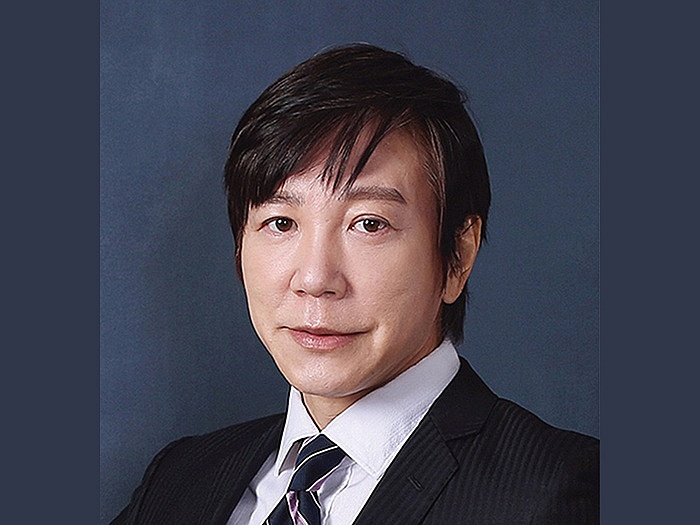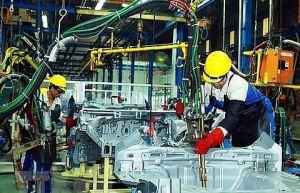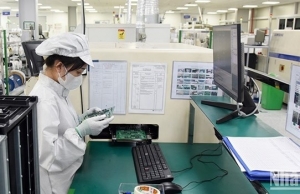Room for Vietnam to increase its localisation rate
How has the local procurement rate among Japanese companies in Vietnam been improved, and what have been the key factors to drive this?
 |
| Takeo Nakajima, chief representative of the Japan External Trade Organization in Hanoi |
According to the Japan External Trade Organization’s (JETRO) 2023 survey, the local procurement rate of Japanese companies in Vietnam is about 42 per cent. The remaining 58 per cent are imported goods. In ASEAN, it is the third-highest after Thailand’s 60 per cent and Indonesia’s 53 per cent. Myanmar, Malaysia, the Philippines, and others are behind Vietnam.
Vietnam’s procurement rate increased by 4.6 percentage points from the 2022 survey (37.3 per cent). Over the past 10 years, local procurement rates have slowly improved, but they took a giant leap this time. Interestingly, local procurement rates increased in all ASEAN countries surveyed. Thailand increased by 2.3 percentage points, Indonesia by 6.1 per cent, Malaysia by 4.3 per cent, and the Philippines by 3.2 per cent. Myanmar, Laos, and Singapore saw significant double-digit improvements.
There are two macro factors to explain. Firstly, the shift was due to inflation and logistics and procurement cost increases. Procurement from within Vietnam rose by 4.6 per cent, and procurement from neighbouring ASEAN countries increased by 2.5 per cent.
In comparison, import procurement from Japan decreased by 4 per cent, meaning that the firms partially replaced procurement from Japan with the locals and ASEAN. It is unlikely that local procurement, which has been increasing slowly until now, will suddenly increase due to cost increases alone, but this has certainly been a boost.
Secondly, companies are reviewing their global supply chains in response to the uncertain international situation. Increasing local procurement is an effective way to counter these risks. On the other hand, diversification and double-tracking lead to higher costs, so companies are looking for low-cost (and politically stable) production bases. Vietnam and ASEAN are attracting attention as such bases.
How has Vietnam’s localisation rate affected the business activities of Japanese companies in recent years, and how have Japanese companies expanded local procurement in Vietnam?
Procurement from local Vietnamese companies has risen by 2.2 per cent. Combined with the increased import costs mentioned above, local companies have become relatively more competitive. Japanese firms have sought to balance quality and costs (leaning more cost-adverse).
Secondly, procurement from Japanese and foreign players in Vietnam climbed by 2.4 per cent. The number of foreign companies entering Vietnam and those that can do business locally has increased. Vietnam approved over 4,000 foreign direct investment cases in 2023, exceeding the previous year.
Among the top markets in terms of direct investment (excluding investment and stock purchases) in Vietnam in 2023, Hong Kong, in second place, increased its investment amount by 2.1 times compared to the previous year. China, in third place, ascended by 1.8 times, and Taiwan, in fifth place, rose by 2.2 times.
There was also a lot of investment from South Korea, Japan, and Singapore. This influx of foreign companies may be an additional procurement source for Japanese firms.
In our survey, procurement from Japan decreased in all ASEAN countries, and procurement from China decreased in eight out of nine countries (only Vietnam saw a slight increase in procurement from China). Instead, procurement from ASEAN and locals increased. Although it is difficult to conclude, procurement from ASEAN may have gone up as cost surged and global companies have relocated their bases to ASEAN.
JETRO annually exhibits a Japan-Vietnam booth at the Vietnam Supporting Industry Exhibition. Held in Hanoi in August 2023, more than 180 business matches were concluded between Japanese and Vietnamese firms in three days, significantly exceeding the previous years.
We have also published a directory of high-quality suppliers in Vietnam annually and distribute it widely to Japanese companies.
In our survey, 43 per cent of companies expressed their intention to expand local procurement, while less than 1 per cent said they would reduce local procurement. Some companies change a certain percentage of their suppliers yearly, demonstrating Japanese businesses’ commitment to strengthening the local supply chain.
What should the Vietnamese government focus on to further promote supporting industries so that more local companies can participate in the supply chains of multinational companies?
To enter a global supply chain, Vietnamese companies must achieve quality, specifications, quantity, delivery date, price, environmental performance, and financial soundness that meet the partner’s requirements in the medium to long term. It presents both challenges and opportunities. There are no shortcuts or back roads.
Even if a company can make one excellent prototype, it must be able to create, for example, one million identical products within a limited delivery date. Even if the quality and technology are fantastic, companies can only enter into a contract if the financial situation, customers’ reputation, or legal compliance are sound enough. In recent years, global companies have asked their suppliers to comply with environmental protection and working conditions. The strict eyes of business partners and consumers nurture producers.
Governments and public institutions can guarantee product quality, ensure consumer safety, and strengthen companies’ competitiveness by setting manufacturing tests, standards, and certifications. Recently, in Japan, the illegal acquisition of inspection data has become a significant problem, and the public believes that it undermines safety and security and damages companies’ credibility.
It is also beneficial to provide opportunities for exhibitions. They have become an essential business tool in advanced countries. Customers often ignore cold calls, emails, and catalogues because they could be less efficient. Representatives with a desire to do business gather at exhibitions. The trade show business in Vietnam is still developing, and many exhibitions aim at a wide range of the public. Advanced nations hold more targeted exhibitions specialising in industries, technologies, and audiences.
 | Hyundai asked to increase localisation rate to 40 per cent Deputy Prime Minister Trinh Dinh Dung has asked South Korean carmaker Hyundai Motor Company to promote technology transfer to its local partners in Viet Nam and increase its localisation rate to a minimum of 40 per cent. |
 | Policies needed to boost production linkage, localisation rate: insiders Policies are needed to boost the number of domestic enterprises participating in the supply chain of multinational companies, and a boost is necessary in the localisation rate of the processing and manufacturing industry, which now remain modest, insiders said. |
 | Measures sought to increase localisation rate in wind, solar power development Experts sought measures to increase the localisation rate in wind and solar power development in Vietnam during a conference in Hanoi on December 14, aiming to realise the Party and State’s orientations and policies regarding technology application, transfer and development in the energy industry. |
What the stars mean:
★ Poor ★ ★ Promising ★★★ Good ★★★★ Very good ★★★★★ Exceptional
Related Contents
Latest News
More News
- Global partnerships key to Vietnam’s IFC development (December 26, 2025 | 16:18)
- Vingroup pulls out of bid to invest in North-South high-speed railway (December 26, 2025 | 11:42)
- Strengthening supply chains through trade promotions and customs reform (December 24, 2025 | 14:00)
- PM orders investment model for North–South high-speed rail (December 22, 2025 | 17:43)
- LS Eco Energy to invest in Vietnam rare earth sector (December 22, 2025 | 17:31)
- Government moves to establish International Financial Centre (December 21, 2025 | 21:00)
- Vietnam's IFC to target global investment flows (December 21, 2025 | 18:00)
- Two national hospitals expand capacity with new facilities (December 20, 2025 | 09:00)
- Ha Tinh breaks ground on major Vingroup industrial and energy projects (December 19, 2025 | 18:24)
- EVN launches major power infrastructure projects nationwide (December 19, 2025 | 18:17)

 Tag:
Tag:





















 Mobile Version
Mobile Version